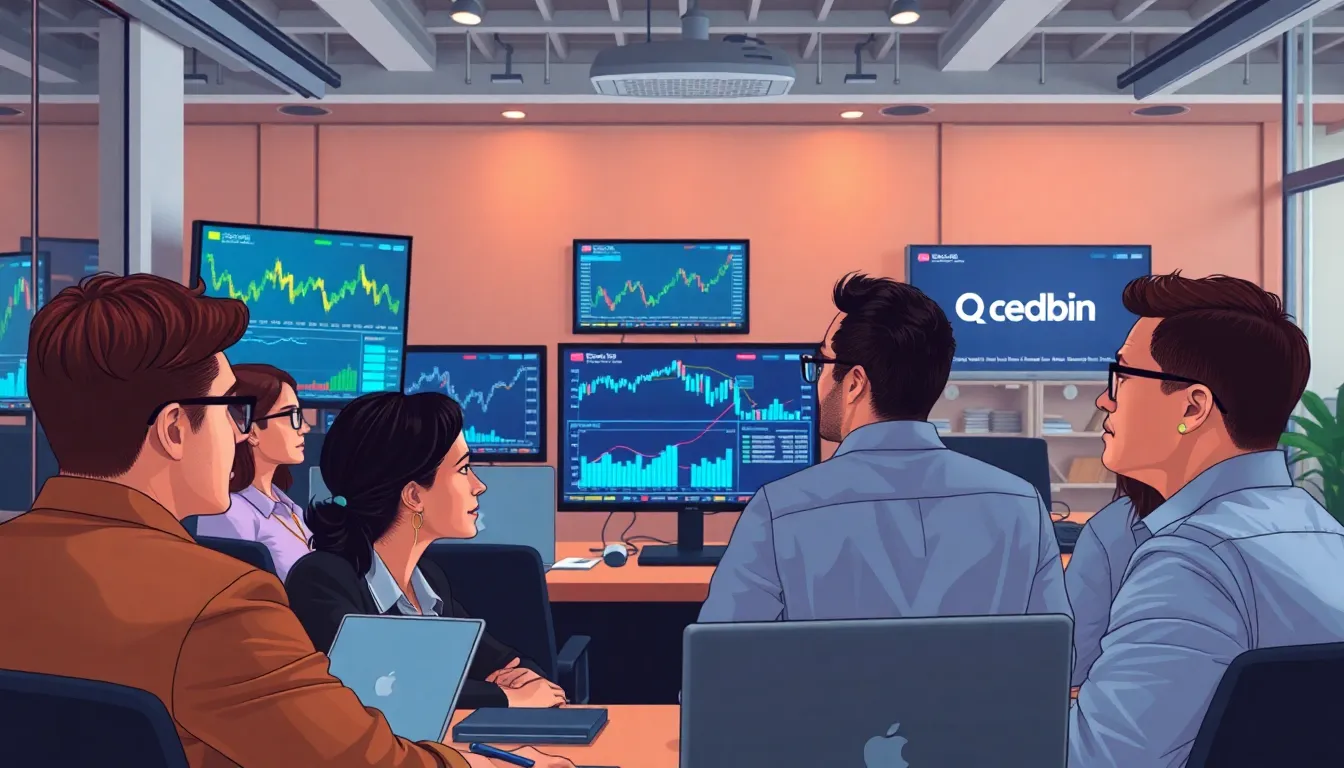
Cybersecurity ETFs: Invest Smartly in Digital Safety and Profit Growth Today
In a world where cyber threats lurk around every digital corner, investing in cybersecurity has never been more essential. Enter cybersecurity ETFs, the superheroes of the investment realm, swooping in to save the day while diversifying portfolios. These exchange-traded funds not only protect against the villains of the cyber world but also offer investors a chance to ride the wave of a booming industry.
Cybersecurity ETFs
Cybersecurity ETFs represent an investment vehicle that allows investors to tap into the growing cybersecurity market. These funds are designed to invest primarily in companies focused on protecting systems, networks, and data from cyber threats.
What Are ETFs?
ETFs, or exchange-traded funds, are investment funds traded on stock exchanges, similar to stocks. These funds usually hold a diversified portfolio of assets, including stocks and bonds. Investors can buy shares in an ETF, gaining exposure to a broader spectrum of companies. As a result, they help manage risk by diversifying holdings across industries. Various ETFs track specific indexes, thus automating investments based on market performance. Some ETFs focus solely on sectors, such as cybersecurity, allowing investors to target niche markets.
The Significance of Cybersecurity ETFs
Cybersecurity ETFs play a vital role in investment strategies due to the rising frequency and sophistication of cyber threats. Such funds provide significant exposure to companies at the forefront of cybersecurity innovation. The market for cybersecurity is projected to reach $345.4 billion by 2026, according to industry reports. Consequently, investing in these funds offers growth potential aligned with market trends. Furthermore, ETFs help build a balanced investment portfolio by focusing on sectors expected to see substantial growth. Investors often view these funds as a means to gain both financial returns and support for technological advancements in security.
Key Players in the Cybersecurity ETF Market


Investors looking to enter the cybersecurity ETF market should familiarize themselves with the major players and their offerings. These providers significantly influence the market landscape, facilitating access to various investment opportunities.
Major Cybersecurity ETF Providers
Leading ETF providers include companies like Global X, First Trust, and Invesco. Global X offers the Global X Cybersecurity ETF, which primarily invests in firms involved in cybersecurity solutions. First Trust provides the ISE Cyber Security ETF, focusing on companies engaged in the development of security software and services. Invesco has the Invesco Cybersecurity ETF, targeting firms that protect data and networks. These providers play a crucial role in shaping investment strategies within the cybersecurity sector.
Notable Cybersecurity ETFs to Consider
Among the notable cybersecurity ETFs, the Global X Cybersecurity ETF (BUG) stands out with a diverse portfolio of cybersecurity firms. Investors often consider the First Trust ISE Cyber Security ETF (CIBR) for its exposure to established industry players. The Invesco Cybersecurity ETF (CIBR) specializes in companies that secure data and networks against threats. Each of these ETFs presents unique opportunities for investors aiming to capitalize on the growth in the cybersecurity market.
Benefits of Investing in Cybersecurity ETFs
Investing in cybersecurity ETFs offers numerous advantages to investors. These funds enable individuals to capitalize on the growing demand for robust cyber protection.
Diversification and Risk Management
Diversification significantly reduces risk exposure by spreading investments across various companies. Cybersecurity ETFs provide access to a broad range of stocks focused on different cybersecurity solutions. Investors benefit from this diversified approach since it lessens the impact of individual company performance. Holding multiple assets mitigates risks linked to market volatility. ETFs often include large and small companies within their portfolios, enhancing opportunities for growth while maintaining a balanced risk profile. Allocating resources to cybersecurity ETFs also allows investors to adapt to changing market conditions effectively.
Growth Potential in the Cybersecurity Sector
Growth potential within the cybersecurity sector remains substantial due to increasing cyber threats. The market is projected to reach $345.4 billion by 2026, indicating robust demand. Cybersecurity ETFs capitalize on this upward trajectory, allowing investors to tap into the expanding industry. Companies included in these funds typically focus on innovative technologies and solutions, targeting various sectors. Investing now presents an opportunity to benefit from early-stage growth within the cybersecurity landscape. Demand for cybersecurity measures continues to escalate as businesses and organizations recognize the importance of data protection.
Factors to Consider Before Investing
Investing in cybersecurity ETFs involves evaluating various factors to make informed decisions. Key elements include market trends and expense ratios, which significantly impact overall returns.
Market Trends and Performance Metrics
Monitoring market trends reveals essential insights into the cybersecurity sector. Industry growth remains robust, with projections indicating a rise to $345.4 billion by 2026. Examining performance metrics helps investors assess fund returns relative to market benchmarks. Noting historical performance provides context that may inform future expectations. Analysts suggest considering ETFs that track leading cybersecurity companies, as their development often outpaces general market growth. Awareness of technological advancements and emerging threats enhances an investor’s ability to identify promising opportunities within the ETF landscape.
Expense Ratios and Management Fees
Evaluating expense ratios and management fees affects long-term investment outcomes. Lower expense ratios often correlate with higher net returns for investors. Many cybersecurity ETFs maintain competitive fee structures, which can vary significantly across funds. Understanding these costs helps investors gauge the cost-effectiveness of their investments. Comparing management fees across similar ETFs allows for an informed choice that aligns with one’s investment strategy. Staying mindful of expenses ensures that potential returns are not eroded by high fees, preserving more profits over time.
Conclusion
Investing in cybersecurity ETFs offers a strategic approach to capitalize on the booming cybersecurity market. As cyber threats continue to escalate the demand for advanced security solutions is set to grow significantly. These ETFs not only provide diversification but also position investors to benefit from the industry’s rapid expansion.
With major players like Global X and First Trust leading the way investors can choose from a variety of options tailored to their financial goals. By understanding market trends and evaluating expense ratios investors can make informed decisions that enhance their portfolios. Embracing cybersecurity ETFs now means aligning with a future where robust data protection is essential for businesses and individuals alike.
